A Terrifying Discovery

Image: Scribol
In 2006, a group of road workers stumbled upon something absolutely shocking. Digging around the outskirts of Frankfurt, Germany, the group of men unearthed a mass grave filled with a large collection of human bones. A chilling sight, it was impossible to know how old the bones were or where they came from, but there were signs they traced back to thousands of years ago.
The Neolithic Age
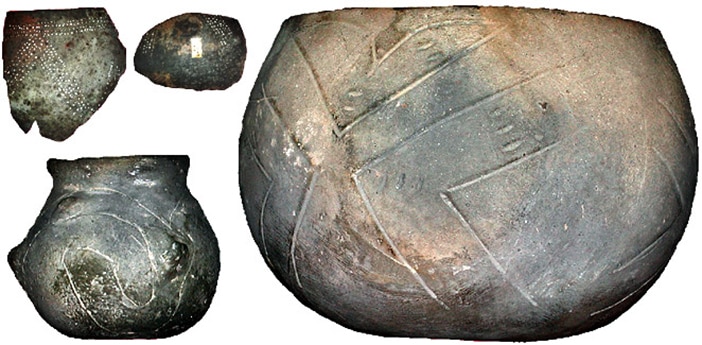
Image: Scribol
Archaeologists call the Neolithic Age, the time of “linear pottery culture.” This was due to the fact that the people during that time lived in small villages and crafted ceramic objects, while sustaining themselves via primitive farming.
7,000 Years Ago
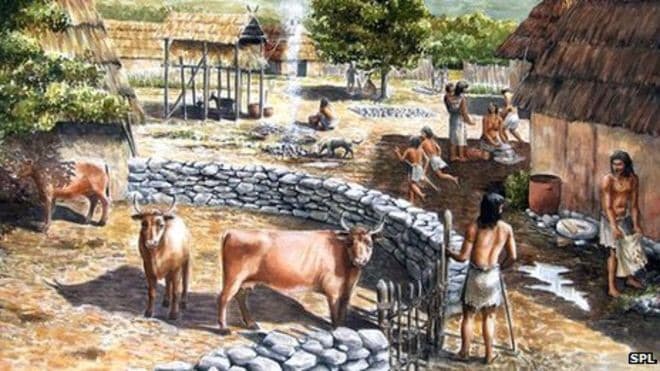
Image: Adobe Spark
The people during this time lived over 7,000 years ago and introduced farming to Europe. Not much is known about the people of this time because there were no written records. Most archaeologists have to utilize speculation and minimal evidence in order to craft a realistic depiction of that period of time.
Digging Up the Dead
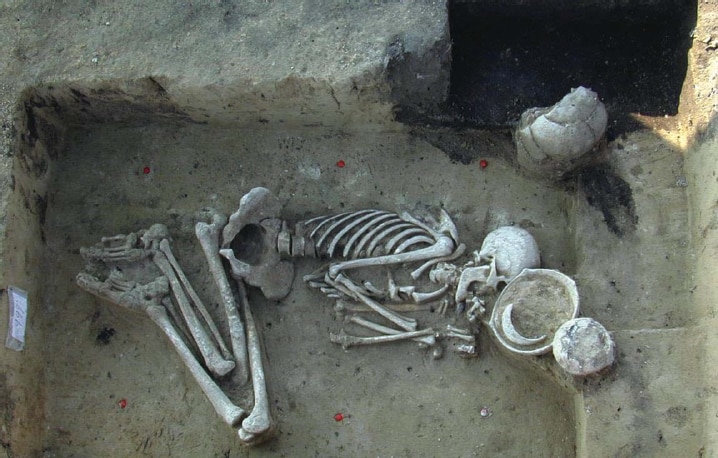
Image: Scribol
The workers were extremely disturbed by the unmarked grave, and immediately contacted the local authorities. The bones were removed and packaged up to be sent to the University of Mainz for further study. The team there would be led by Christian Meyer, a bio-archeologist with an interest in the Neolithic period.
Heinous Death

Image: Yahoo
Although the bones were heavily decayed, the team was able to date the remains back over 7,000 years. It was determined the bones had most likely been thrown into a ditch in a hurry and then covered with a heavy layer of soil. Why would anyone do something so heinous?
26 Lost Souls
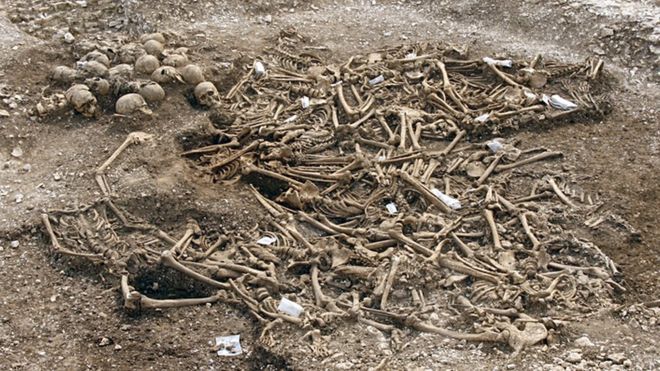
Image: BBC
Once the bones were counted and sorted, the team identified remains from 26 different skeletons that were a mixture of both adults and children. However, knowing the farmers of the Neolithic period, Meyer determined this had not been a normal burial. Why? Well, during that time, the people buried their dead in individual graves with pottery and other valuables. This mass grave told a completely different story.
Meeting a Violent End
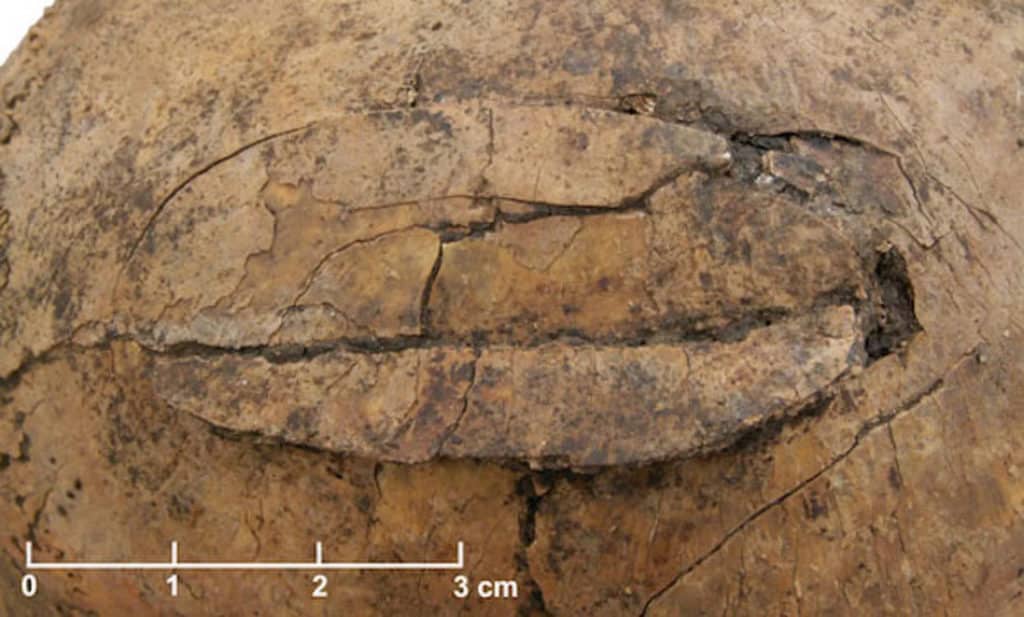
Image: Live Science
As the team continued to study the bones, it was determined that the deaths of these 26 souls had been violent. Some of the skulls revealed fractures from blunt force trauma and there were animal bone arrowheads embedded in some of the remains as well. It was possible that an entire village had been maliciously murdered. The question was…why and by whom?
A Grim Revelation
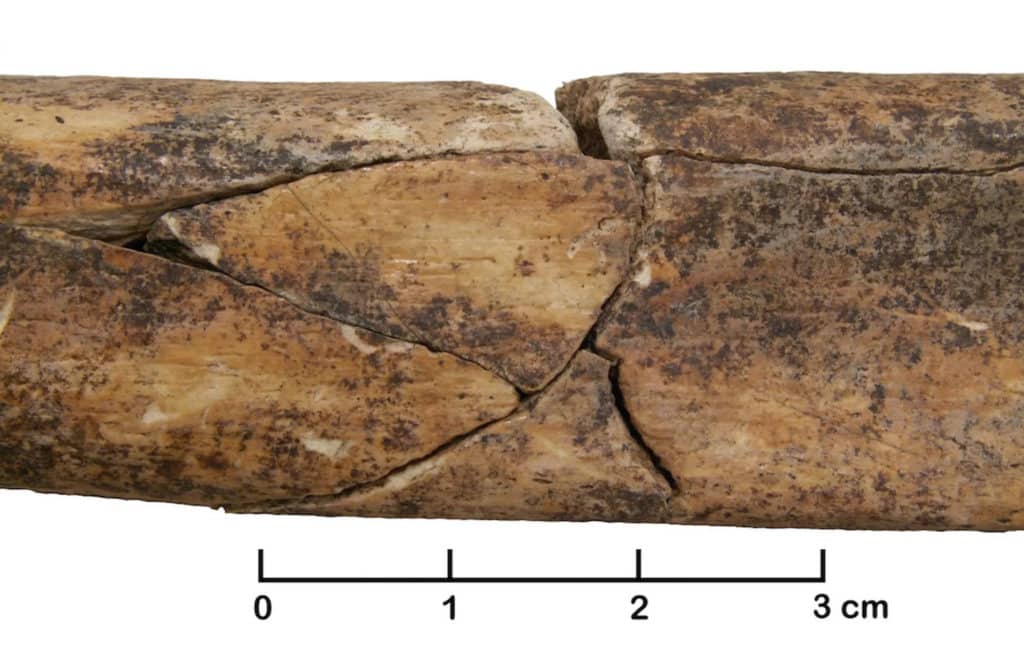
Image: Live Science
Meyer continued his investigation, which only revealed horrifying evidence that the people could have also been brutally tortured. The shin bones of many of the skeletons had been smashed, though it was impossible to know if the abuse happened before or after death. According to Meyer, if the victims had been tortured it shed a whole new light on this period of time, since these levels of barbarity had never been referenced during this era.
Torture Theory Rebuked

Image: Wiki
However, University of Illinois anthropologist, Lawrence Keeley takes issue with the torture theory. He explained in an interview that most torture practices focused on parts of the body with the most pain receptors such as the feet, hands or head. Breaking someone’s tibia wouldn’t be a popular torture method.
Warding Off Enemy Spirits
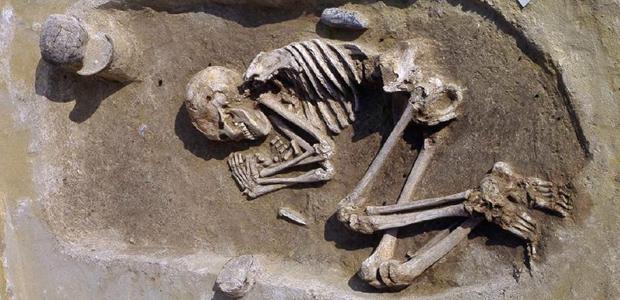
Image: ThingLink
Meyer believed that it was possible the bodies were brutalized in an attempt to prevent enemy spirits from following the tribe home. It could have also been an act of revenge by crippling the enemy’s spirit in the afterlife via body mutilation after death.
Where Are the Women?
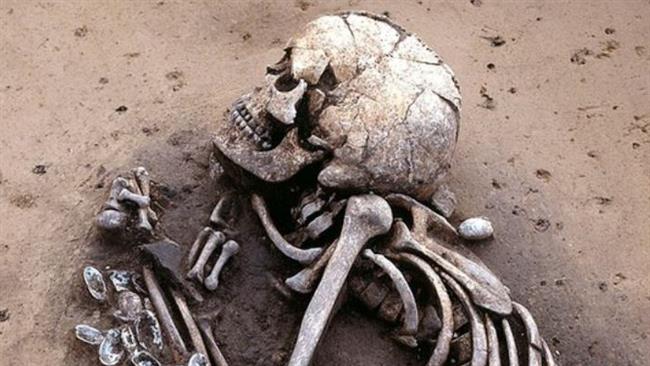
Image: PressTV
As the remains were catalogued, Meyer noticed that there were no young women among the bones. It was determined that the men of the village had most likely been killed and the younger women who were seen as child bearing were taken captive.
Wiping Out the Settlements
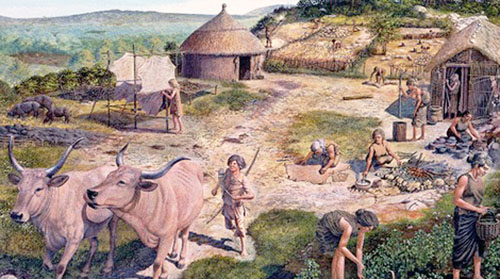
Image: Short History
Archaeologist, Lawrence Keeley had this to say about the women’s fate. “The only reasonable interpretation of these cases, as here, is that a whole typically-sized linear pottery culture hamlet or small village was wiped out by killing the majority of its inhabitants and kidnapping the young women.”
Conflict Over Land
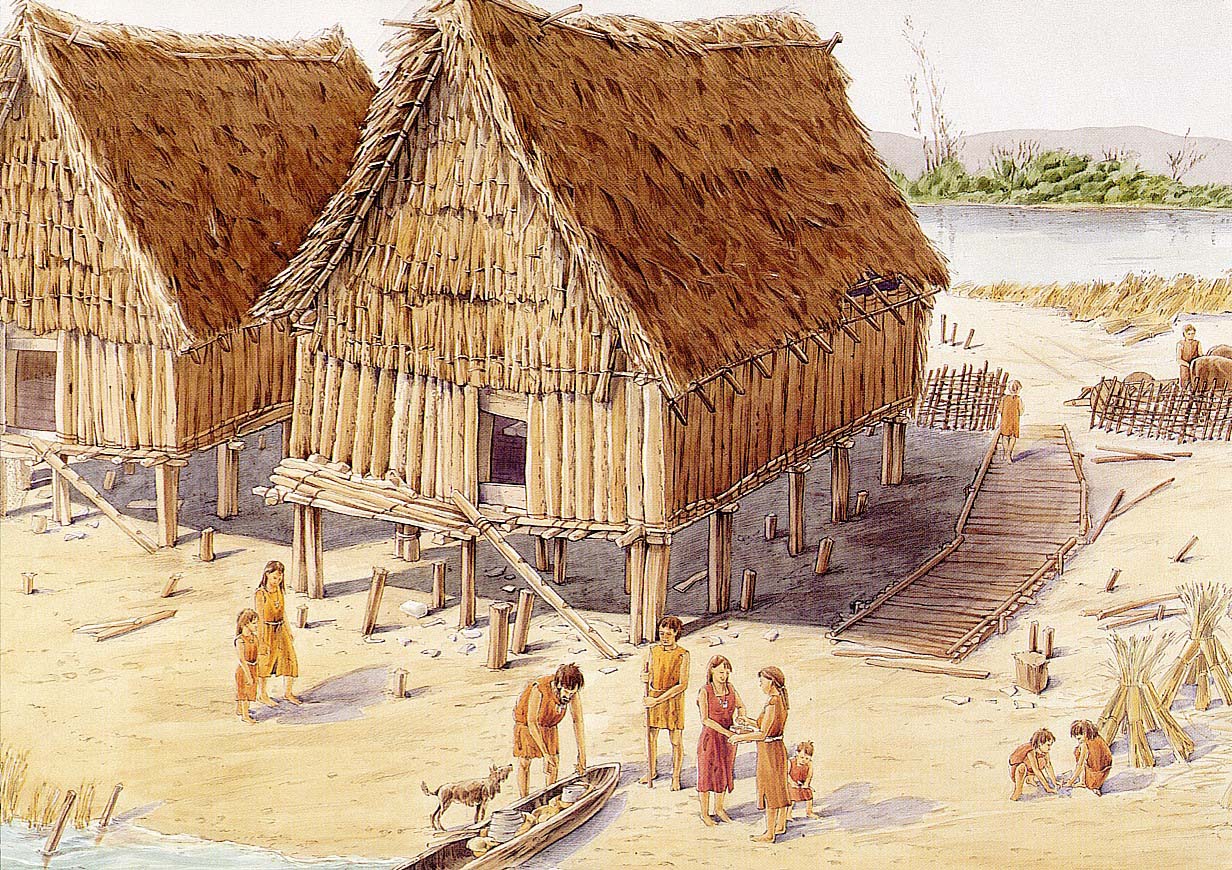
Image: Emaze
More evidence also revealed that it must have been an organized raid which was intended to wipe out the small village. Due to the location of where the bones were found, it was believed that the massacre took place at a dividing line between two different tribes. According to Meyers this would have made a conflict more likely.
Moving West
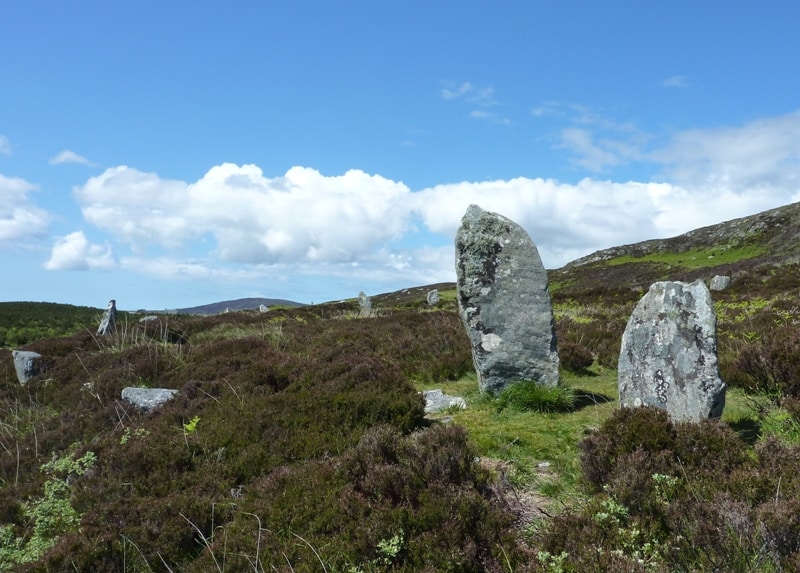
Image: Otter
7,000 years ago, the Neolithic farmers had moved west from the Middle East and had begun to clear the land for cultivation. This led to new settlements being developed. According to historians, the land would have seen competition for resources, which could have led to the potential for warfare.
The German Talheim Incident

Image: Hunter Gather
Evidence that supports warfare during this time was first discovered in 1983. A site known as the Talheim death pit was discovered in Germany and have over 34 sets of human remains. Sixteen sets of these remains were determined to be children.
Mass Trauma

Image: Haaretz
Many of these skeletons had old wounds that had healed incorrectly over time. There were also multiple instances of trauma to the bones, which confirmed conflict was common during this time. Many of the skulls found at the death pit had fractures which would have been from some sort of blunt force.
More Evidence in Austria

Image: IFL Science
Austria is the home to another mass grave that was discovered 20 miles north of Vienna. Over 67 bodies were found in the burial pit, but it is possible there are over 300 since the site hasn’t been fully excavated. However, the 67 sets of remains that were examined pointed to an extremely violent death.
Constant Fear

Image: World History
Recent evidence continues to back the theory that the people during this time lived in a constant state of fear. Therefore, the communities developed tools to protect themselves and defend their land.
Not a Peaceful Time

Image: NYSAD
All of this compelling evidence leads Meyers to believe that the communities during this time weren’t as peaceful as they were led to believe. As more gravesites are discovered, it is clear the communities that were warring during this time wanted to demonstrate their sheer power, and would wipe out entire villages in order to claim new land.
History Changes

Image: History
It’s a grim reality for historians who believed that these Neolithic communities lived and farmed together in peace. Keeley believes that this proves that those who believed war was rare during this time were wrong. In fact, the reality is violence was frequent, ritualized and happened way more than we expected in prehistory.
